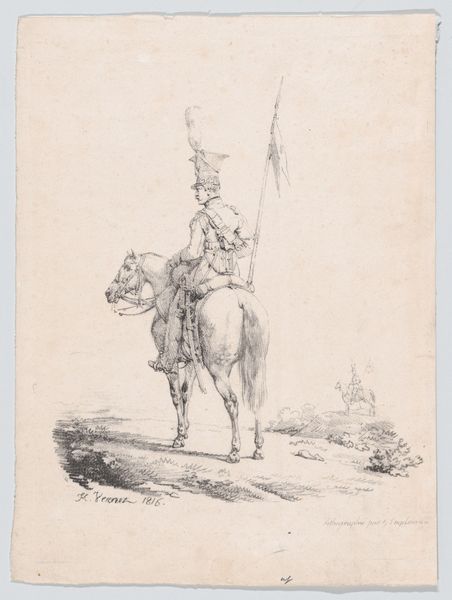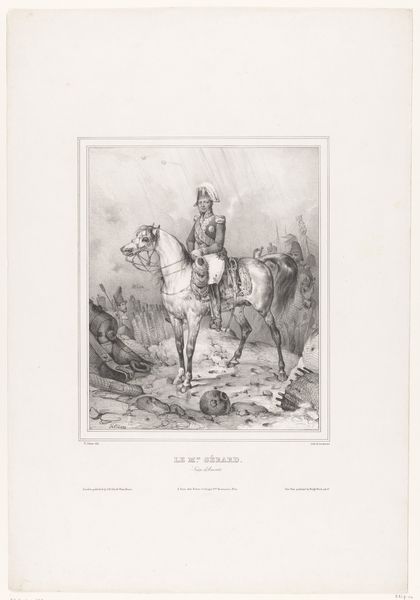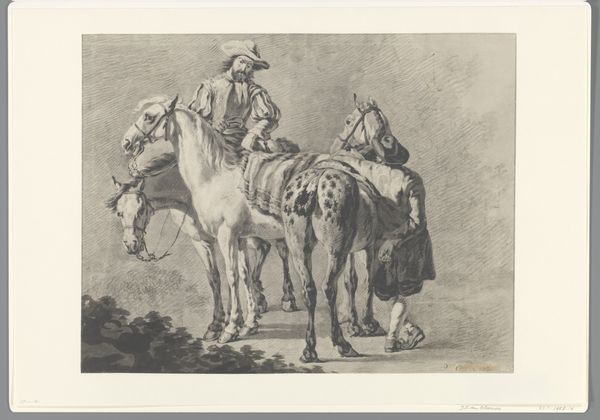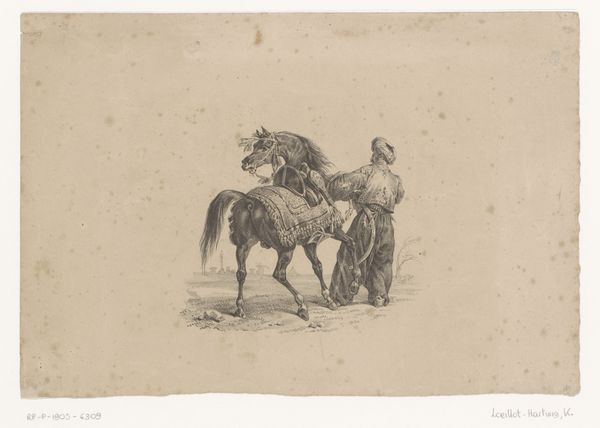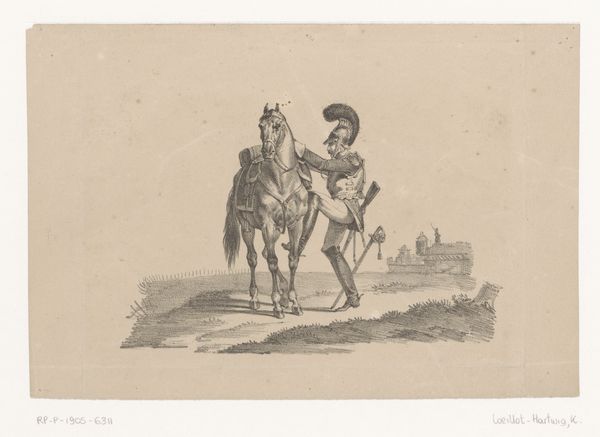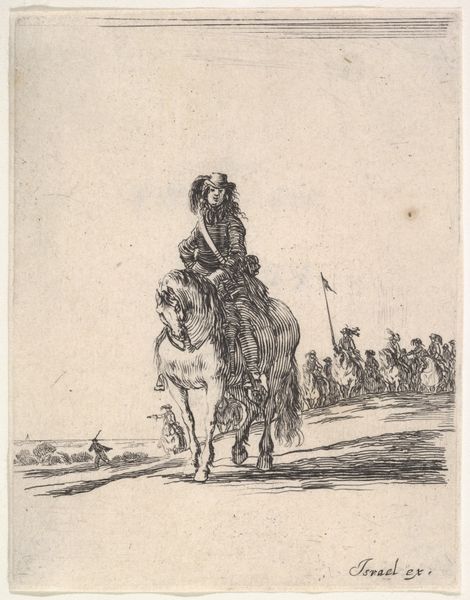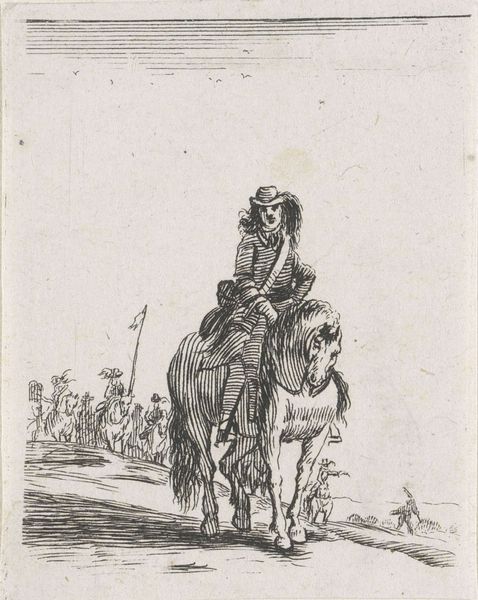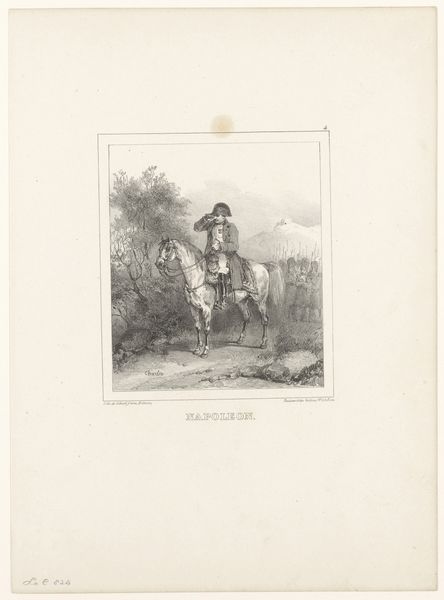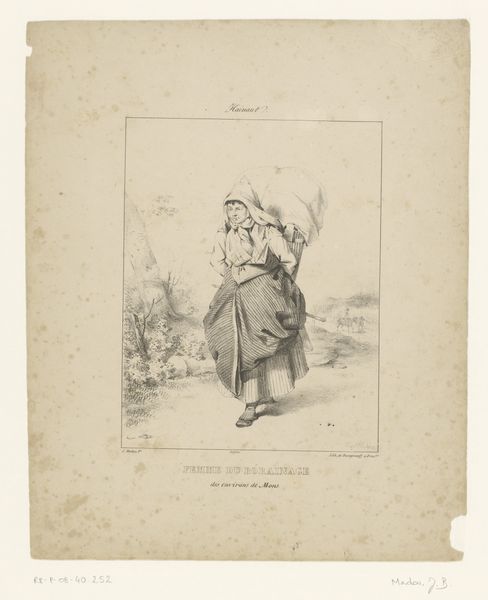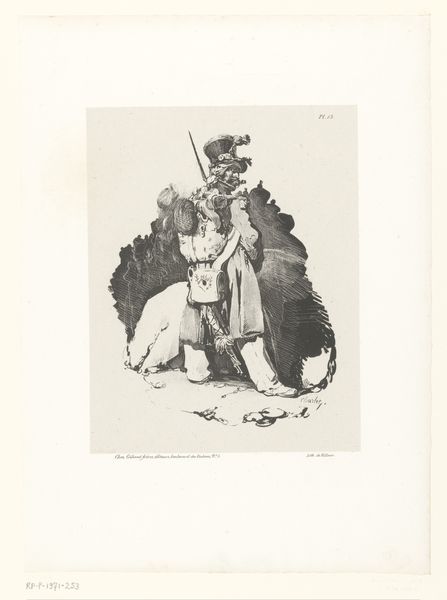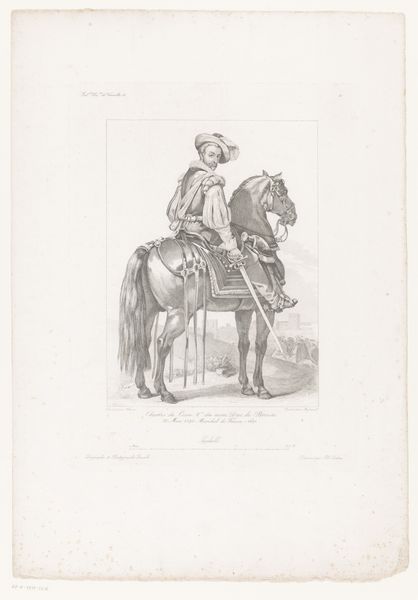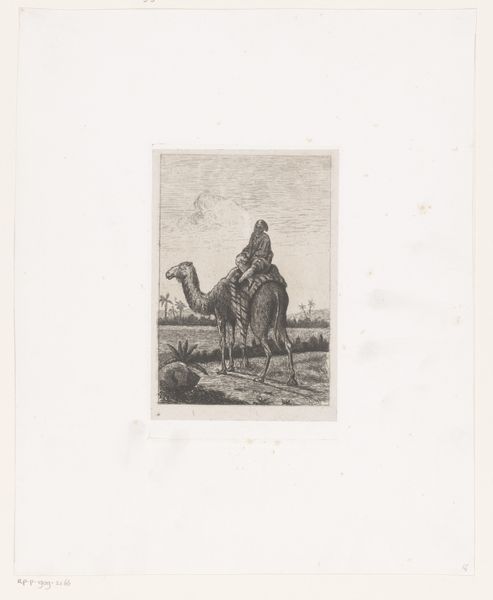
drawing, print, etching, paper
#
drawing
#
narrative-art
#
ink paper printed
# print
#
etching
#
old engraving style
#
etching
#
figuration
#
paper
#
ink drawing experimentation
#
sketchbook drawing
Dimensions: height 236 mm, width 167 mm
Copyright: Rijks Museum: Open Domain
Curator: Here we have Alfred Hubert's etching from 1869, titled 'Tijl Uilenspiegel en zijn vader Klaas op een ezel'—or 'Till Eulenspiegel and his father Klaas on a donkey.' It’s an intriguing rendering of a classic folk tale character. Editor: The first thing that strikes me is how stark the image is. The landscape feels barren and the figures appear weary, almost burdened by their journey. There's a real sense of the underdog narrative playing out here. Curator: Indeed. Hubert created this piece within a specific social and political context. The figure of Till Eulenspiegel, a trickster and rebel, often becomes a symbol of resistance against authority. His image enjoyed surges in popularity corresponding to different social upheavals in Europe. Editor: Exactly! So, portraying Eulenspiegel with his father offers us a perspective into generational struggles against oppression. The fact that they're traveling on a donkey, traditionally a symbol of humility and stubbornness, also adds another layer to this narrative. Curator: It's also interesting to note Hubert's choice of etching. The medium itself has a history steeped in print culture and disseminating ideas widely, reflecting Eulenspiegel’s own broad reach. It connects the artwork with accessibility to various audiences. Editor: The composition, too, contributes to this interpretation. The relatively small scale of the figures within the vast, empty background could emphasize the limitations of individual or even familial resistance against larger power structures. I also wonder how the audience at the time of production may have interpreted this scene, right? Curator: Considering the political landscape of 1869, with burgeoning nationalist sentiments and various social tensions brewing across Europe, the print could serve as both a commentary on, and encouragement to the emerging political landscape and ideas. Editor: So, Hubert is engaging with socio-political tensions in 19th-century Europe through a seemingly simple rendering of a folk tale. Food for thought about how art both reflects and informs societal values. Curator: Ultimately, Hubert provides us with a visual meditation on the themes of resilience and resistance found within folklore that transcend time. Editor: Absolutely. And in looking back, we see new and exciting connections that relate to the current moment, even through an image from long ago.
Comments
No comments
Be the first to comment and join the conversation on the ultimate creative platform.
